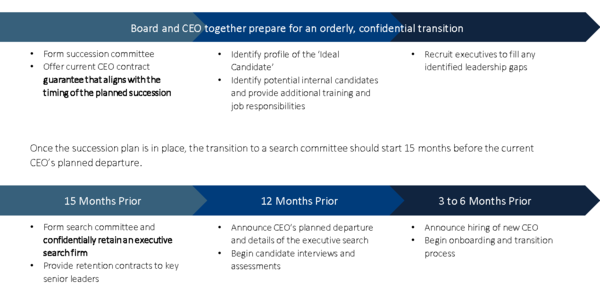Preparing for planned and emergency nonprofit CEO transitions
The nonprofit CEO is critical to an organization’s success. Across all sectors of the
industry, the nonprofit leader provides extraordinary service to the organizations
that save lives, improve the health and well‐being of those in need, and educate
and enlighten society. While nonprofit CEOs usually enjoy lengthy tenures,
transitions are inevitable. And the transition to a new leader can be problematic
and expensive or an opportunity for positive change.
A protracted transition may bring many challenges including loss of productivity,
derailment of the strategic plan, and a delay in completing the capital campaign;
and, undue delays could lead to uncertainty and untimely departures among the
senior management team. With a succession plan in place, nonprofit organizations
can prepare for effective transitions whether planned or unexpected.
DHR’s applies a proven process to assist board leadership and CEOs to develop a
plan.
Emergency Succession Planning
Whether or not an organization has a long‐term succession plan, a CEO’s
unanticipated departure or extended absence is destabilizing. Having an
emergency plan ready – and approved by the board in advance – provides paid
leadership and the board with an agreed‐upon action plan and ensures that
communication to internal and external stakeholders is clear and immediate.
Contact James Abruzzo at DHR to assist with developing an
emergency CEO succession plan.
The steps to create an Emergency Succession Plan include:

A DHR survey of nonprofit board members and chief executives confirmed that four out of five nonprofit organizations agree that a succession plan is “important” or “very important.”
Yet, less than one in five organizations surveyed have a succession plan in place.
- Data suggests that the tenure of nonprofit CEOs is significantly shorter than overall industry averages, that leadership within the nonprofit sector is aging, and the pipeline for new leaders may not meet the demand.
- Furthermore, the current group of nonprofit leaders is particularly vulnerable during the pandemic.
Long-Term Succession Planning
The most effective long‐term succession plans require an ongoing effort by the board and the CEO. Best practices dictate that succession plans drive alignment by incorporating the vision, mission, strategy and current and aspirational goals of the organization. The plan, led by the board and CEO, anticipates the future while examining the current internal strengths and assets. While most nonprofit organizations “look to the outside” for a new leader, a long‐term succession plan often guarantees viable internal candidate options when considering a new CEO.
DHR’s process draws upon our expertise in executive assessment, leadership development, and executive search to help organizations understand its talent gaps, identify high‐potential leaders, and implement a process to ensure a productive leadership change. Following the successful transition, DHR can provide coaching and onboarding plans to ensure an even
more seamless transition.
Succession planning may begin when the CEO and board align on a time table.

If your organization is one of the 80% without a long‐term succession plan,
contact James Abruzzo for an informational consultation.
About Us
The mission of DHR’s Nonprofit Practice, “to improve the effectiveness of nonprofit organizations world-wide,” represents the consultative approach and commitment to establish mutually beneficial and long-term relationships with each of our clients. We believe that great leaders make great organizations that in turn help change the world. Executive search, organizational assessment, onboarding, and emergency and long-term succession planning are the suite of services offered.
